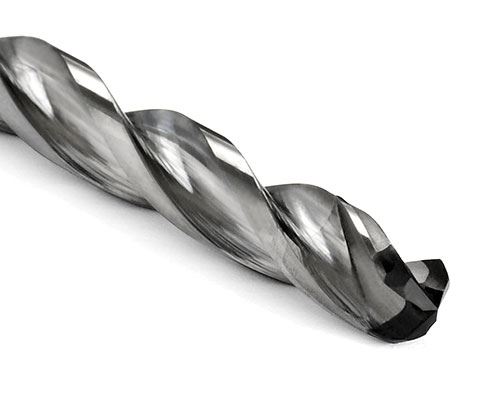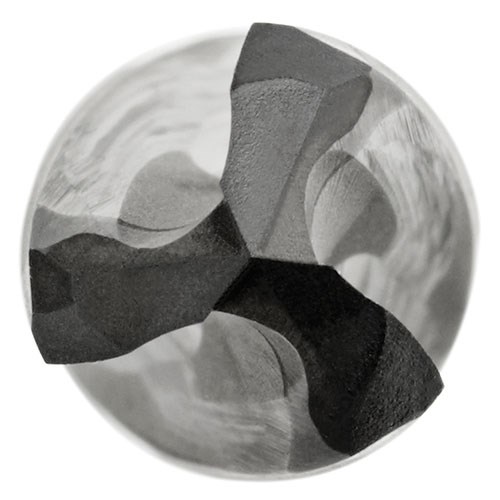Solid PCD Drill Tip Cleaves Composites
A solid PCD tip and a third flute provide improved edge sharpness, thermal conductivity and stability compared to PCD vein or dual-brazed tip designs.
Avoid skimping on the diamonds in composite drilling applications, and you can avoid leaving your parts literally in the rough. That’s the idea behind the CX1, a drill from Seco Tools that employs a dome-shaped, solid polycrystalline diamond (PCD) tip to avoid the fraying and delamination problems common to PCD vein or dual-brazed tip designs. The tool also features a third drill flute that is said to improve stability compared to traditional twin-flute designs. Other benefits include high cutting speeds, long tool life, low friction, improved heat transfer, capability for multiple re-sharpenings and reliability.
The primary advantage of a solid PCD tip is edge sharpness, the company says. This is critical in composite applications because the thin fibers that constitute the material are difficult to cut. Failing to shear cleanly through these fibers can result in material fray and premature part replacement. Further, additional stress on the material created by insufficiently sharp cutting edges can reduce mechanical toughness through delamination. Such problems are more likely with coated PCD than a solid PCD tip because wrapping the coating around the cutting edges can create a dulling effect.
Compared to twin-flute, coated PCD drills, the CX1’s third flute reduces vibration and improves both stability and roundness in “plain” composite materials, the company says. Furthermore, the CX1’s dome-shaped tip features a double-angle geometry that is said to reduce uncut fibers and delamination in composite-only applications. Grinding this geometry would be impossible with tools that make use of brazing or similar PCD techniques, the company says. Plus, the dome cap also makes it possible for the drill point to be reconditioned.
The solid PCD dome tip also offers superior thermal conductivity, the company says. This results in enhanced product stability and higher cutting speeds. This thermal conductivity advantage is particularly important for composite materials that melt fast. Given that composite machining operations rarely employ coolant, it is important to transfer the heat away from the cutting area as quickly as possible.
Although solid PCD-tipped drills are more expensive than PCD-coated drills at the front end, the overall return on investment can be substantial when drilling a large number of holes. According to the company, the CX1 geometry can effectively drill two to three times more holes than a PCD-coated drill, essentially spreading out the costs.
The company adds that investing in solid diamond-tipped drills also makes sense when hole quality is of the utmost importance. Delamination is becoming more of a safety concern for aerospace industry work because of the increasing use of composite materials, particularly in components that constitute the tail sections of airplanes.
The CX1 series includes a mix of dimensions for holes ranging from 0.125 to 0.375 inch in diameter. Chamfers can be incorporated into drill designs for further application flexibility. The company also offers special PCD geometries.
Related Content
-
Tungaloy Expands Drill System With Drill Sleeves
Adding drill sleeves to the standard lineup enhances drilling productivity of Swiss-type sliding-head automatic lathes.
-
Emuge-Franken's New Drill Geometry Optimizes Chipbreaking
PunchDrill features patent-pending geometry with a chipbreaker that produces short chips to control machining forces.
-
Kay Engineering's Gundrilling Machine Performs Range of Operations
Kay Engineering’s DeHoff 20144 is used to perform gundrilling, pull boring, roller burnishing and thread tapping.

















.png;maxWidth=300;quality=90)
